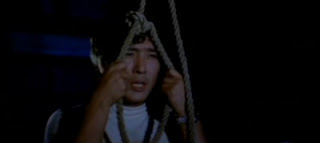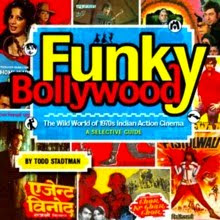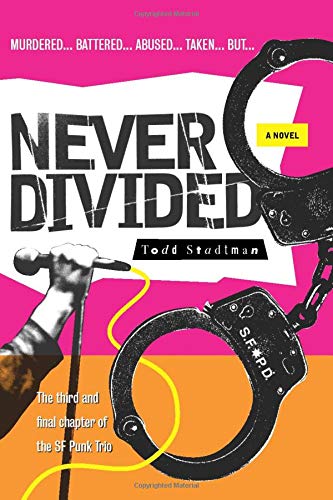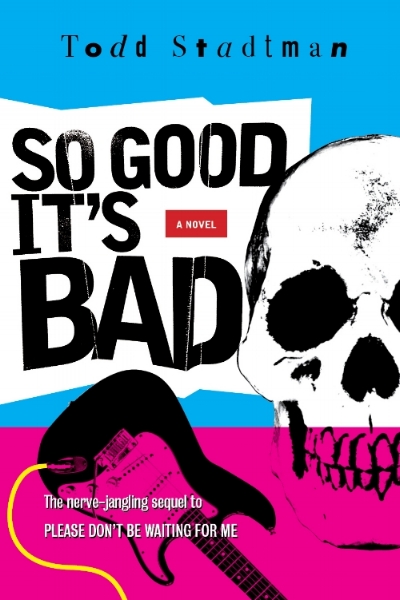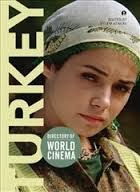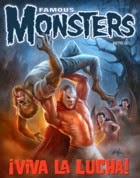Pearl Cheung Ling starts out
Miraculous Flower in a role that she had pretty much trademarked by that point in her career: that of the ragged kung fu vagabond. Truly, if Chaplin earned the nickname “The Little Tramp” in silent era Hollywood, Pearl was just as deserving of it in the world of 1980s martial arts cinema. In this case she even has a mournful song, sung by Pearl herself, playing on the soundtrack to underscore her debased condition, lamenting the fact that she is doomed to wander the Earth alone -- with no direction home, one could say, and like a complete unknown, although that would be another song entirely. Of course, as is not uncommon in Pearl’s films, her character will go through a transformation over the course of
Miraculous Flower, a sort of blossoming of identity that makes the film’s title that much more apropos.
Miraculous Flower was one of a pair of Pearl’s films that, in video release, were misleadingly titled as sequels to her notorious auteur effort
Wolf Devil Woman -- the first being 1982’s
Matching Escort, which, despite being made after
Miraculous Flower, was rechristened
Wolf Devil Woman II, while
Miraculous Flower became known in some circles as
Wolf Devil Woman III. It must be said, however, that
Miraculous Flower differs from both of those films in a couple of important ways -- and that’s putting aside the fact that it’s a standalone film that in no way continues the story of either. First and foremost is the fact that, unlike
WDW and
Matching Escort, it was not directed by Pearl herself, but by Fong Ho, a director about whom there appears to be little information on the English language Internet. Pearl
is, on the other hand, credited with coming up with the film’s story, though the actual script was written by none other than Godfrey “
Ninja Terminator” Ho. Secondly, while not free of the oddball fantasy elements that make Pearl’s most well known films so endearing, it is nonetheless a somewhat more sober affair, as well as a somewhat less rough hewn one.



Here Pearl is May, a young girl of apparently humble origins who, in a somewhat daunting opening information dump, is directed by her dying mother to undertake a complex quest that will somehow end in her learning a “big secret” concerning the nature of her origins. May thus sets out, swathed in the classic Pearl Cheung Ling garb of rough cut skins and apparent carpet scraps, on a long journey that takes her across barren, snow swept peaks and lonely expanses of deeply forested woods. Eventually she crosses paths with the dirt-phobic itinerant scholar Lord No-Dust (Tsung Hua), who takes pity on her and brings her back to the opulent home of his father (Wang Hsieh). After May aids in fending off an attack by a vicious rival of the father’s known as Lonely Fly (Peng Kang), the father decides to adopt her, thus leading into Pearl’s first transformation in
Miraculous Flower; that from grimy tomboy into, if only briefly, a radiant lady of the manor. Soon thereafter, she stumbles upon the knowledge that No-Dust is leading a double life as a masked avenger called the White Swordsman and, in exchange for her silence, enters into an arrangement with him to train her as a fighter.

Eventually, after learning everything that she can from the young lord, May sets off again on her quest, whereupon she soon meets up with yet another mentor figure, the Happy Fairy, as played by the prolific Chinese actress Gua Ah Leh. True to her name, Happy Fairy imbues May with powers that are somewhat more magical than those taught by No-Dust, with no small amount of extravagant wire work expended toward depicting May soaring this way and that across the landscape as a result. The Fairy also reveals to May the secret of her origins. In brief, it turns out that her true family were casualties of one of those bloody free-for-alls that are all too common in the mythical Martial World, and that the object of that free-for-all, as is so often the case, was a weapon of legendary power, in this instance the appetizingly named “Bowel Cutting Blade”, which it turns out May has had in her possession the whole time. This revelation paves the way for Pearl’s final transformation within the film, into the fearsome, black garbed avenger of the film’s title, who leaves a telltale flower at the site of each of her kills. Unfortunately, May will ultimately find that her kill list contains the names of some whom she has come to love along the way.



If you wanted to see a Pearl Cheung Ling film that was really quite strange, I would recommend
Wolf Devil Woman, but if you wanted to see a Pearl Cheung Ling film that was really quite good, I would recommend
Miraculous Flower. This is not simply because of the film’s more consistent dramatic tone, but also due to the breathtaking nature of its many fight scenes, which for once provide a decent showcase for Pearl’s physical skills, which actually turn out to be pretty impressive. Noteworthy for their combination of exciting choreography, dazzling wire work, and dynamic shooting technique, these fights also stand out for the spectacular settings in which they play out, taking place everywhere from atop raging waterfalls, to sheer cliff faces, to snowy tundras. And to top it all off, we get a desperate climactic battle that takes place within the fiery bowels of an active volcano.
Don’t get me wrong, though.
Wolf Devil Woman and
Matching Escort are both films that I deeply love. It’s just that, while those movies inhabit a strange universe all their own,
Miraculous Flower is capable of going head to head against more conventional and professionally mounted examples of its genre on their own terms -- while at the same time nonetheless bolstering Pearl’s image as a true eccentric of kung fu cinema. It is Pearl’s status as a weirdo that I cherish above all, but I respect her even more for being a weirdo who was clearly capable of following a more well trod path, yet who chose not to nevertheless.
Miraculous Flower is a resounding bitch slap to anyone who might have previously entertained doubts about her skills as a martial artist (perhaps myself most of all -- ouch!), and as such can’t be recommend highly enough.
*********




































